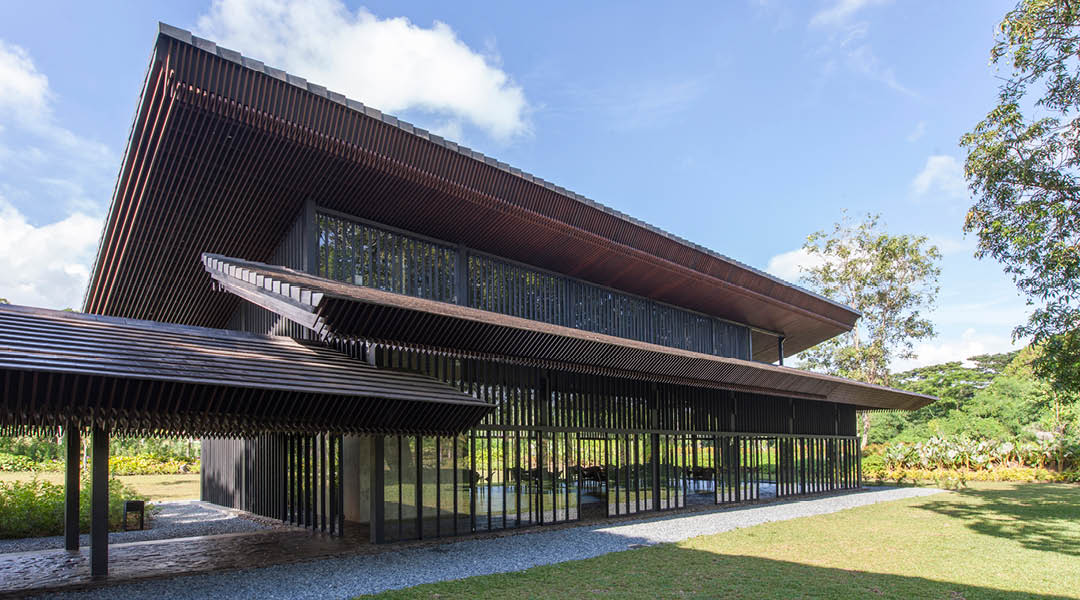
Genius Loci: Hacienda Community House by Jorge Yulo
The Hacienda Community House is the recreational space for the homeowners of Hacienda Sta. Elena. Designed for various leisure activities, the building engenders community among residents usually tucked away in their homes. “When I was first asked to design the clubhouse,” Architect Jorge Yulo, principal of Jorge Yulo Architects and Associates, recalls, “what immediately came to mind was an all-inclusive extension of home, an open house where everyone is welcome and can experience a sense of the place.”
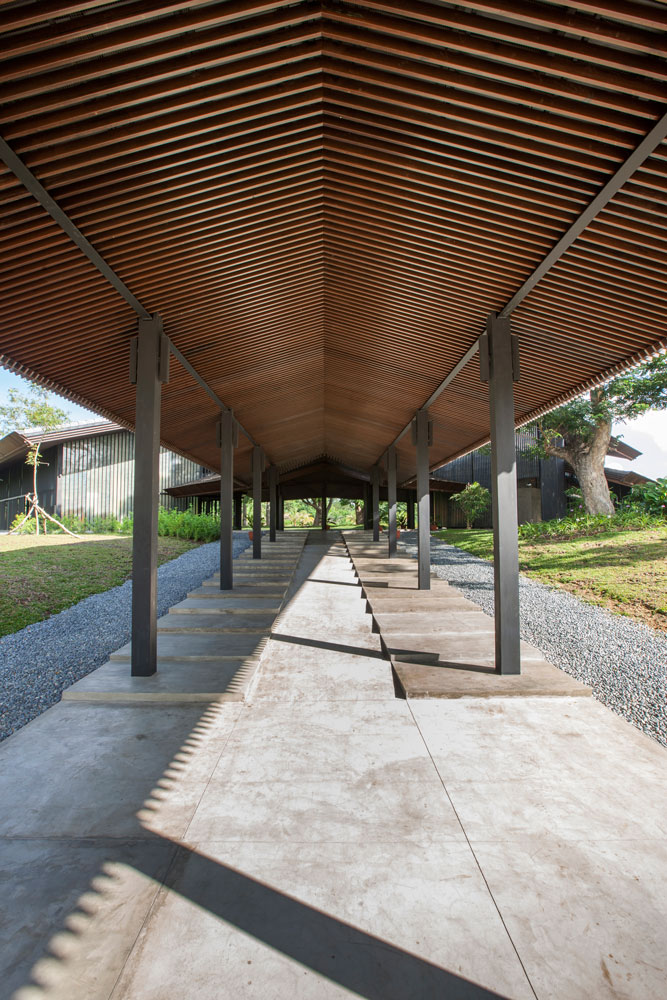
The site is on a plot of land once part of a contiguous seven thousand-hectare sugar estate in Laguna. Four ancient mango trees dominate the 17,863-square meter site. The spot may have once been a clearing within the cane fields for a small residential enclave for the encargado and his extended family. The 1,076-square meter footprint covers 6% of the site.
Three separate rooms of varying size, each playing upon the theme of a glass box with a pronounced roof, comprise the community house. These spaces are organized along two perpendicular covered corridors. The organizing path passes alongside, through, or and empties into each of the primary enclosures.
Apart from the entry ramp and a length of path extending to a small gym, the floor surface throughout the plan is expressed as an undisturbed, uniformly flat abstraction of the natural ground plane. The flatness emphasizes omnidirectional horizontal expansion, acknowledging the building as an artificial construct while clarifying the affinity for the natural surroundings that serve as its inspiration.
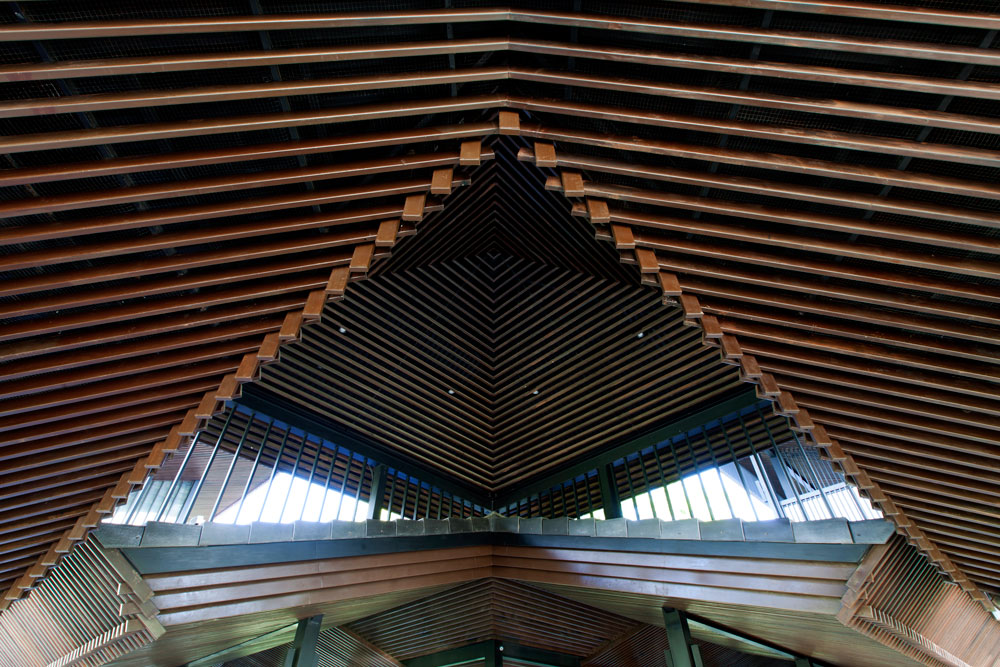
The prominence and variety of roofs create a strong sense of shelter and place while the visual and spatial permeability of the glass boxes blurs the lines between interior and exterior. The resultant equilibrium gives the impression that the building was not so much built on the site but rather inserted between earth and sky.

READ MORE: Minimal Manor: Anna Sy Designs a Nature-centric Home
Concept
The four mango trees that enjoy primacy of place are the place-giving elements around which the community house is organized, and to which the architecture defers. The architect wanted the site to be the central element from which nothing he built takes away. The various components of the building are distributed across the sprawling site to encourage users to pay attention to what was there before the architecture.
The art of Mondrian and the trees inspire and inform the thematic gestures Yulo sought. He methodically abstracted the elements of the trees rectilinearly until he arrived at their fundamental quality—the closest one can come to their truth.
This then formed the lexicon of variably spaced vertical steel mullions that mimic the way trees filter sunlight. The dense patterns at the top progressively loosen with each descending tier, creating a gradation like the consecution from leaves to twigs to branches to trunk. Different permutations of this language become apparent as one experiences different parts of the building. Similar metamorphism is employed in the articulation of the hallway ceilings to incline users to move along them, encouraging discovery and contemplation.
Apart from the mango trees, a chapel, built long before the clubhouse was commissioned, stands some distance away. The orientation of the new plan picks up on that of the chapel to facilitate easy incorporation of the latter into a possible larger scheme in the future. The community house thus assumes the social and recreational counterpoint to the spiritual and congregational context of the chapel, recalling the plaza and church relationship established in all towns and cities during the Spanish Colonial period.
Foyer
Visitors to the Hacienda are met at the driveway by a high ceiling over an entry ramp. The ramp is flanked on either side by a lazy stagger of steps and connects at a 45° angle to the intersection of the two corridors. Overhead space is compressed as the ramp rises while the roof remains consistently horizontal. Space then suddenly shoots up vertically, dramatically relieving the compression with a lofty cupola. This crowning element, rotated 45° from the organizing grid, marks the foyer at the confluence of the three paths. The orchestration of spatial sequences achieves a sense of procession and satisfying arrival. From the foyer, the architecture both frames and is framed by the splendor of nature over which the four old mango trees stand sentry.
The rooms on either side of the foyer present perspectives partly masked by metal-framed polycarbonate panels. Designed with thin translucent vertical strips (the color of barong Tagalog material), these overlays transform into oversized lanterns when lit from behind. They create an added sense of warm welcome after dark and a cheerful domesticity that recalls the friendly glow of light through capiz windows.

Room A
To the left of the foyer, Room A, the largest of the spaces, houses a 200-square meter dining hall and a kitchen. Bordered on three sides by steel framed glass door panels, the space encourages overspill onto the gardens surrounding it. Yulo wanted the roof planes to meet at irregular junctions to create an engaging spatial event overhead. The prime roof plane has eaves that extend generously toward the west and south to shield against the oppressive solar heat. It also overshoots the natural roof ridge to keep a band of north-facing clerestory windows in its shadow.
Beneath the clerestory sill, a secondary roof plane flares out before tucking back neatly beneath the first roof. This overhead gesture provides a sense of termination to the path that continues into the entire length of the room. The result is a bright, airy space that flows beyond its edges into the surrounding gardens. The kitchen is located at the east end of the hall beside the entrance. A concrete wall separates the spaces and service is carried out by means of a window. A hefty timber slab cut from a typhoon-felled acacia tree serves as a counter and gives the area a hearty rusticity. Room A’s outer appearance fittingly evokes a sibi; an open-sided thatched shed used by farmers in fields for shelter that were once organic to these flat plains.
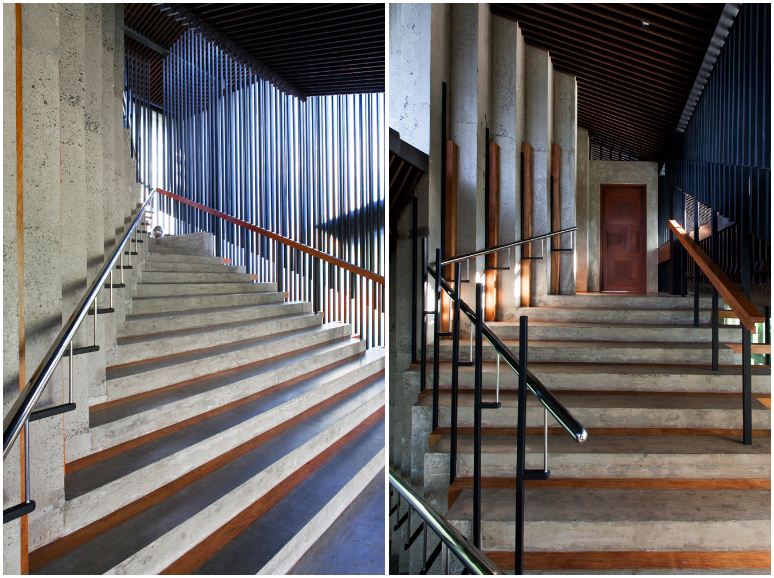
Room B
Up the path to the right of the foyer, Room B contains three spaces on two levels. Stairs that access the upper level are situated on the southwest corner of the block directly behind the polycarbonate panel. Formed from raw concrete, these were designed with gestalt-inspired threads and risers that are reflected vertically on an angled sidewall. Timber embellishments playfully emphasize rhythmic progression and provide anchor points for the handrail supports.
The lower floor is designated as a library but can easily serve a multitude of functions. It is a cool, calm, shady space. The metal slatted ceiling gives the impression of timber and endows the room with a sense of intimacy. A glazed gable end provides occupants a glimpse of sky. As in the dining hall, a robust acacia section from the same tree serves as a counter. Supported by a mirrored substructure, the hefty slab here seems to float weightlessly above the soothing glow of the wooden floor. The raw concrete backdrop lends the space with an almost primal sense of shelter while the vertical corrugations on the southwestern corner hint at the interstitial dynamics performed at the stairs outside.
The roof overshoots the northern edge of the floor plan, creating a covered outdoor area that can accommodate overspill or play host to a separate function. The upstairs space shares much of the feel of the level below but with the added opportunity to experience the trees at canopy level. This adjacency to foliage accentuates the aspiration to connect with nature in a most vivid manner. The structure is articulated in a way that allows the lower roofscape to come into the room to create an impression of endless expanse, as well as an engaging dynamic with the space below. A row of operable windows borders the space and opens out to the surroundings. The lower roof angles down from the sill permitting unobstructed vistas of the entire grounds while imbuing the room with light and space. A second order of windows below the sill looks into the area beneath.
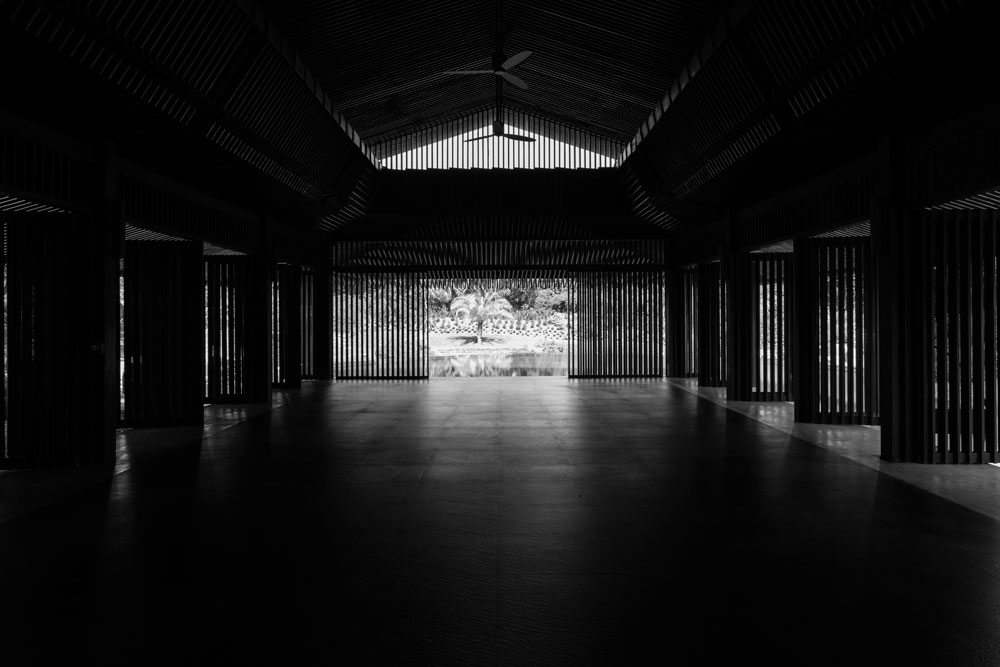
Room C
The path continues northward through Room C, and intersects the length of the building, clearly delineating the recreational space from the changing rooms. The structure opens on all sides. By forcing air into openings along the building perimeter, the Venturi effect, a phenomenon that promotes increased airflow, is created and distributes the air-cooled by the pool throughout the site.
The relaxed space of Room C is surrounded by a children’s pool, which is framed within a lapping pool. The partially oval shape of the former provides playful relief from the rigidity of the rectilinear plan. Black stone tiles line the adult pool and guarantee pleasant water temperature long after sunset as the material slowly radiates accumulated heat. Built-in seating around both pools encourages leisurely lounging. Built-in benches surrounding the locker rooms offer both comfort and visual delight. The ceiling above this area is an aftereffect of two rectilinear cadences that crosscut into each other, animating the space.
Gym
Finally, the pathway that travels northward from the foyer terminates with the gym. A magic box of sorts, the gym is designed with glass and steel wall panels that all open to allow the compact building to expand into the surrounding space. The squares of the roof and floor plan are rotated 45º from each other thus creating a volumetric material counterpart to the entry canopy void.
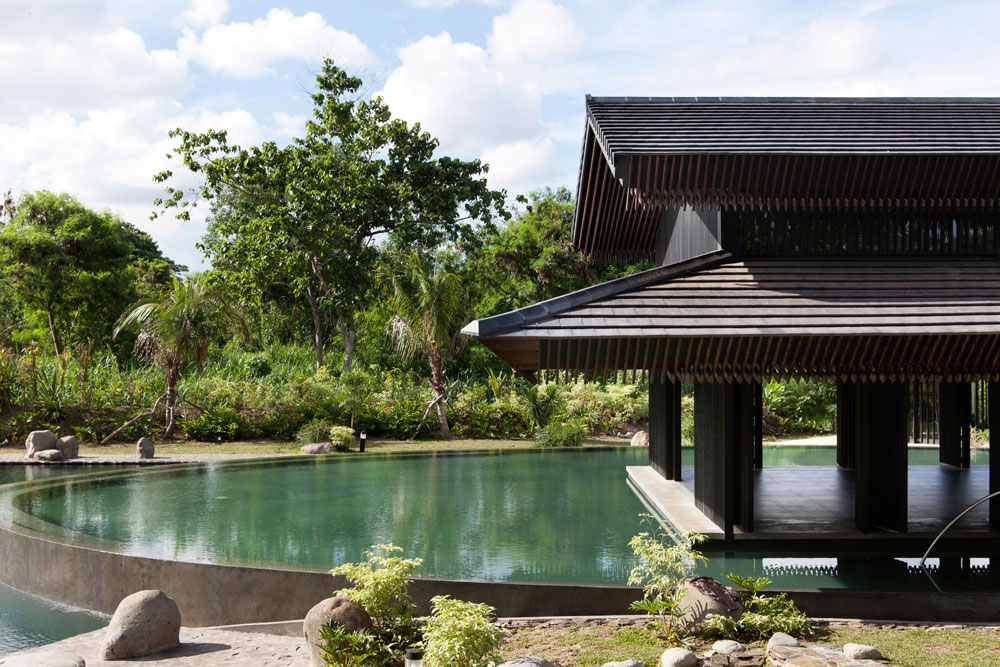
Experience
With the Hacienda Community House, Jorge Yulo reinforces the ability of architecture to introduce a particular philosophy of contemplation and connection between people and the natural world, with other people, and perhaps even to themselves. In a design where each element has a proper size and place, yet is dependent upon a complex interrelation of components, nature and social order seem to merge; implying that the latter is a product of the former.
The experiences it provides evoke a mellow reverence for its surroundings and a sense of permanence in the transient, uncontaminated by the muck and chaos of daily life. It is a building that helps to put things in perspective. By eliminating everything that isn’t essential, one reaches an appreciation of what is truly important in life. All concerns and anxieties become, at least momentarily, merely illusory. Its experiential nature and layered intangibles defy convenient summary. It can only truly be understood and appreciated by means of firsthand experience, one that will always be well rewarded. ![]()
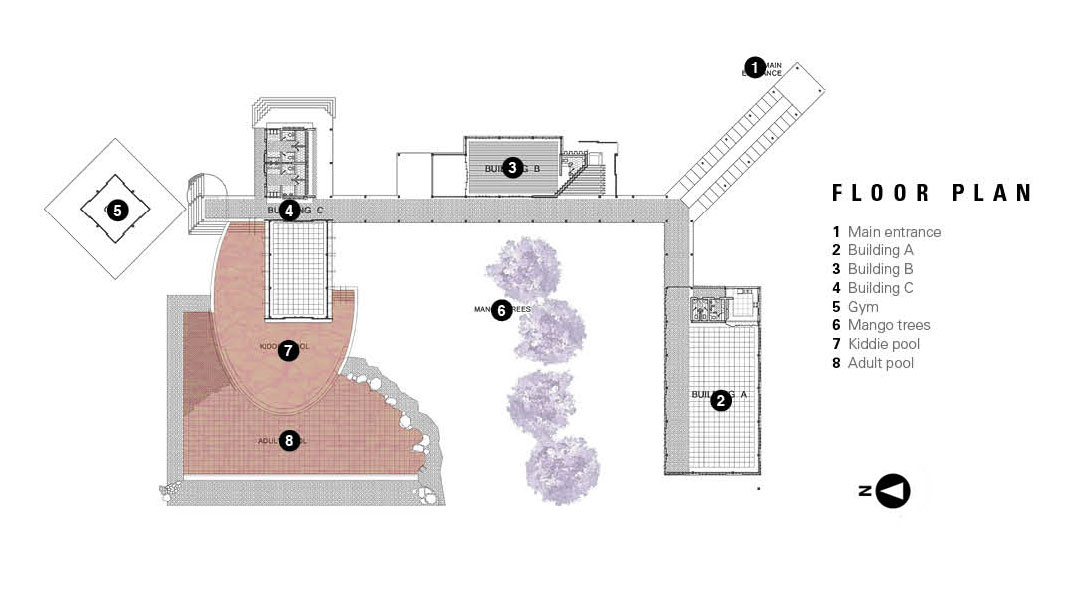
This article first appeared in BluPrint Volume 5, 2015 . Minor edits were made for BluPrint online.
Photographed by Ed Simon


